
|

|
|
Home Site Search Contact Us Subscribe
|
|
|
Colombia: Transformed / Architecture = Politics The curators of the exhibition making its world debut in Chicago this week throw the spotlight on five Colombian architects who leverage brick, concrete, and glass forms to improve the lives of ordinary people. By Vladimir Belogolovsky and Fernando Villa, AIA, LEED AP April 3, 2012 Editor’s note: The exhibition “Colombia: Transformed/Architecture = Politics” makes its World debut at the Instituto Cervantes of Chicago, April 3 - May 27, 2012.
Manifesto
Between believing and not believing, it is better to believe. Between acting and disintegrating, it is better to act.
Le Corbusier
In the midst of the global financial crisis, while architects in developed countries contemplate the diminishing role of architectural forms, their counterparts in Latin America, particularly in Colombia, have succeeded in realizing a number of exciting and inspiring projects. These initiatives convincingly demonstrate how original architecture can be employed in establishing renewed identities and purpose for local communities. Critics continue to paint gloomy pictures of hard economic realities, which suggests architects should look for projects in emerging markets and even migrate there, as many have already. A number of Colombian architects find their creative use right in their own hometowns. They devote their efforts to projects in which their innovative thinking is appreciated the most – in the poorest neighborhoods, which surely can be found in every architect’s home base.
Ten projects by five Colombian architects provide much more than just shelter or entertainment, and constitute a cross section of the nation’s architecture. Most are winners of architectural competitions, which have become the norm for building public projects in Colombia. These architects work hand in hand with local politicians who see their towns as working tools and have faith in the transformative power of design. Together, they believe that architecture is able to bring identity to various parts of towns; to create new, dignified, and attractive public spaces for interactive learning and leisure; and most importantly, to lift the spirits of residents of the country’s poorest neighborhoods. These transformative projects give us, architects from around the world, concrete hope: If our highly developed societies experience a glitch in building new symphony halls, museums of fine art, and iconic towers scraping clouds passing by, there is surely still a need to solve more essential issues in disadvantaged communities, the conditions of which frustrate us all, not just the residents. And if our own politicians do not see such activism as a priority, then perhaps it is up to us, the architects, to initiate socially-conscious projects such as new parks, playgrounds, and community centers in concert with the direct involvement of community groups and universities. And why not bring our mighty corporations into this mix, as well!?
Kindergartens, schools, a sports complex, and a library built in Bogotá, Medellín, and Santa Marta in recent years prove what some architects, sadly, gave up believing long ago: that architecture can transform peoples’ lives. In Colombia, architecture leverages brick, concrete, and glass forms to improve the lives of ordinary people. These projects carry real value for their communities. They act as beckoning landmarks and spark curiosity and a sense of pride; they stitch together broken neighborhoods, fuel peoples’ aspirations, and provide safe and interlinked urban environments. They also raise another vital aspect of architecture which no longer seems to be a concern for many contemporary practitioners – the search for regional identity. Internationally, projects often look undistinguished and irrelevant to their locales, but Colombian architecture stands out. It is not pretending to be elsewhere. It is rooted in its place. Instead of catering toward spectacle craving tourists, it is built to address the real needs of the locals. The Colombian experience has a clear message for the international community of architects – we are all needed right where we live. Architects should stay local, be proactive, and keep transforming architecture to better serve all of us. Architecture does make a difference – it is better to believe, it is better to act.
Vladimir Belogolovsky, Curator Fernando Villa, AIA, LEED AP, Co-curator
About the exhibition:
“Colombia: Transformed/Architecture=Politics” traces 10 recently built socially-conscious projects by five leading voices in contemporary Colombian architecture: Daniel Bonilla and Giancarlo Mazzanti from Bogotá, and Felipe Mesa, Juan Manuel Pelaez, and Felipe Uribe from Medellín. These visionary works reflect significant social shifts that are taking place in Latin America today. They demonstrate ideas of social inclusion, as well as innovative architectural forms and spaces, which have been steadily transforming Colombian cities and the nation.
The projects are explored through photographs, slides, drawings, and film footage to celebrate how these buildings are appropriated by the public.
About the curators:
Vladimir Belogolovsky, founder of the New York City-based Intercontinental Curatorial Project, curates architectural exhibitions worldwide. Trained as an architect at Cooper Union, he is the author of books: Felix Novikov, Green House, Soviet Modernism: 1955-1985, and Harry Seidler (Rizzoli, 2014). His Harry Seidler exhibition will travel to Europe, North America, and Australia from 2012 to 2014. vbelogolovsky@gmail.com
Fernando Villa, AIA, is a senior associate with New York City-based Magnusson Architecture & Planning. Trained at the Universidad Pontificia Bolivariana in Medellín, Colombia, he lectures internationally on sustainable design, and is the international representative of the Colombian Society of Architects in NYC. He will be a juror at the XXIII Colombian Biennial of Architecture this year. villafernando5@gmail.com
Exhibition Graphic Designer: Maria Villa, Emphasize LLC
Exhibition Coordinator, Chicago: Iker Gil, MAS-Studio
Also see:
One-on-One: We architects are politicians: Interview with Giancarlo Mazzanti "Now is the time to think of how architecture can change the world. We architects can assume that role and make a real difference in how people live and behave." By Vladimir Belogolovsky |
(click on pictures to enlarge)  Sergio Gomez Giancarlo Mazzanti, Mazzanti Arquitectos: España Library , Medellín 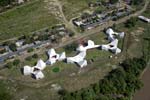 Jorge Gamboa Giancarlo Mazzanti, Mazzanti Arquitectos: Timayui Kindergarten, Santa Marta 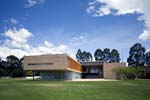 Rodrigo Davila Daniel Bonilla, Daniel Bonilla Arquitectos: Nogal Arts Center, Bogotá 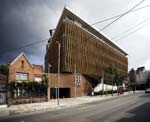 Rodrigo Davila Daniel Bonilla, Daniel Bonilla Arquitectos: Bogotá Chamber of Commerce, Bogotá 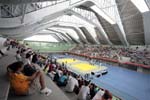 Sergio Gomez Felipe Mesa, plan:b arquitectos/Mazzanti Arquitectos: Coliseums for the South American Games, Medellín 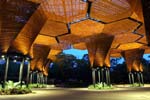 Sergio Gomez Felipe Mesa, plan:b arquitectos: Orquideorama Botanical Garden, Medellín 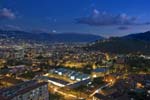 Sergio Gomez Juan Manuel Pelaez: Las Mercedes School, Medellín 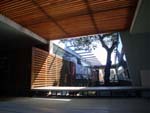 Sergio Gomez Juan Manuel Pelaez: Bureche School, Santa Marta  Sergio Gomez Felipe Uribe, +udeB: La Independencia School, Medellín 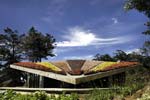 Vasquez, Villegas Felipe Uribe, +udeB: Arvi Park, Medellín |
© 2012 ArchNewsNow.com